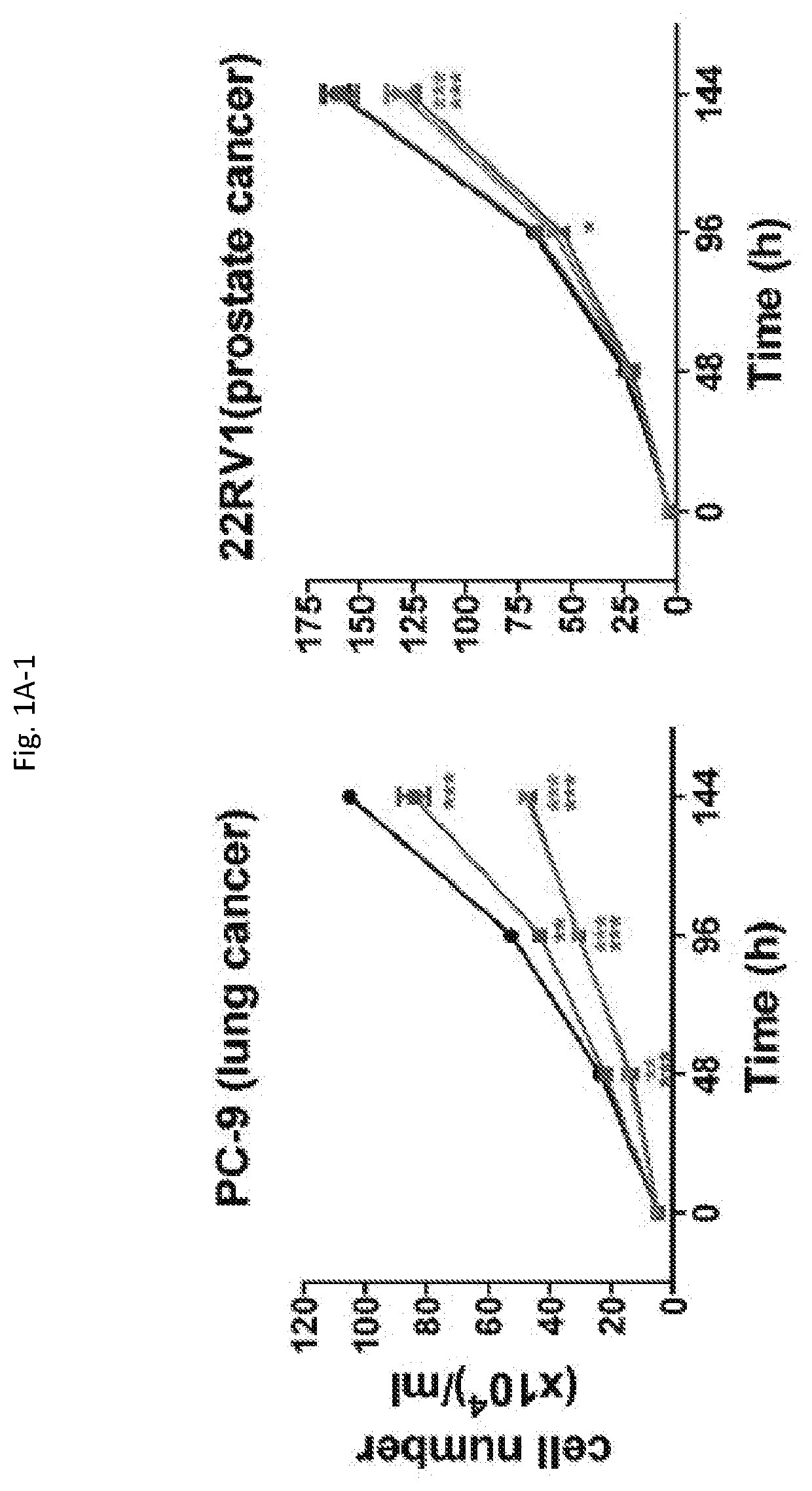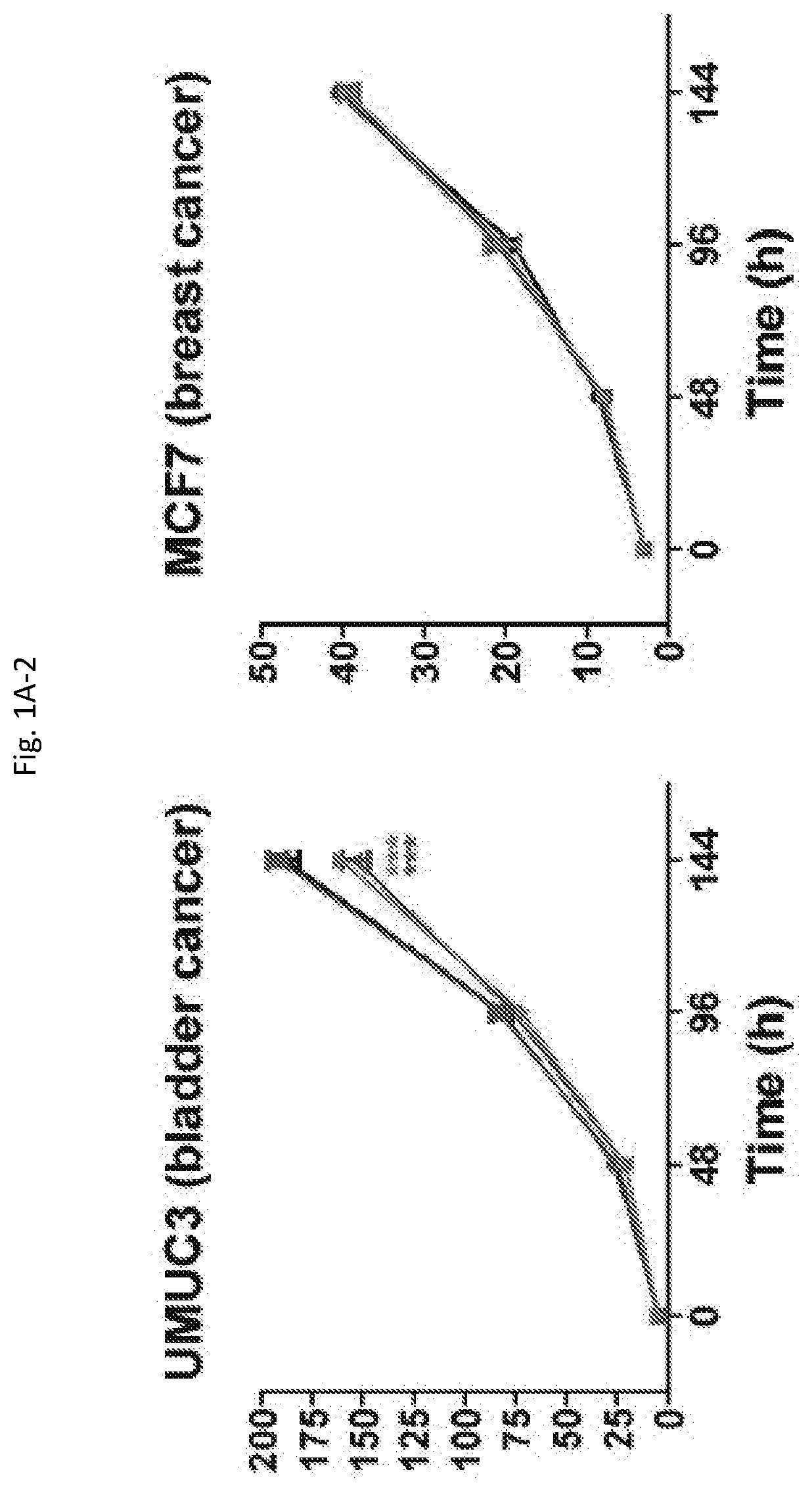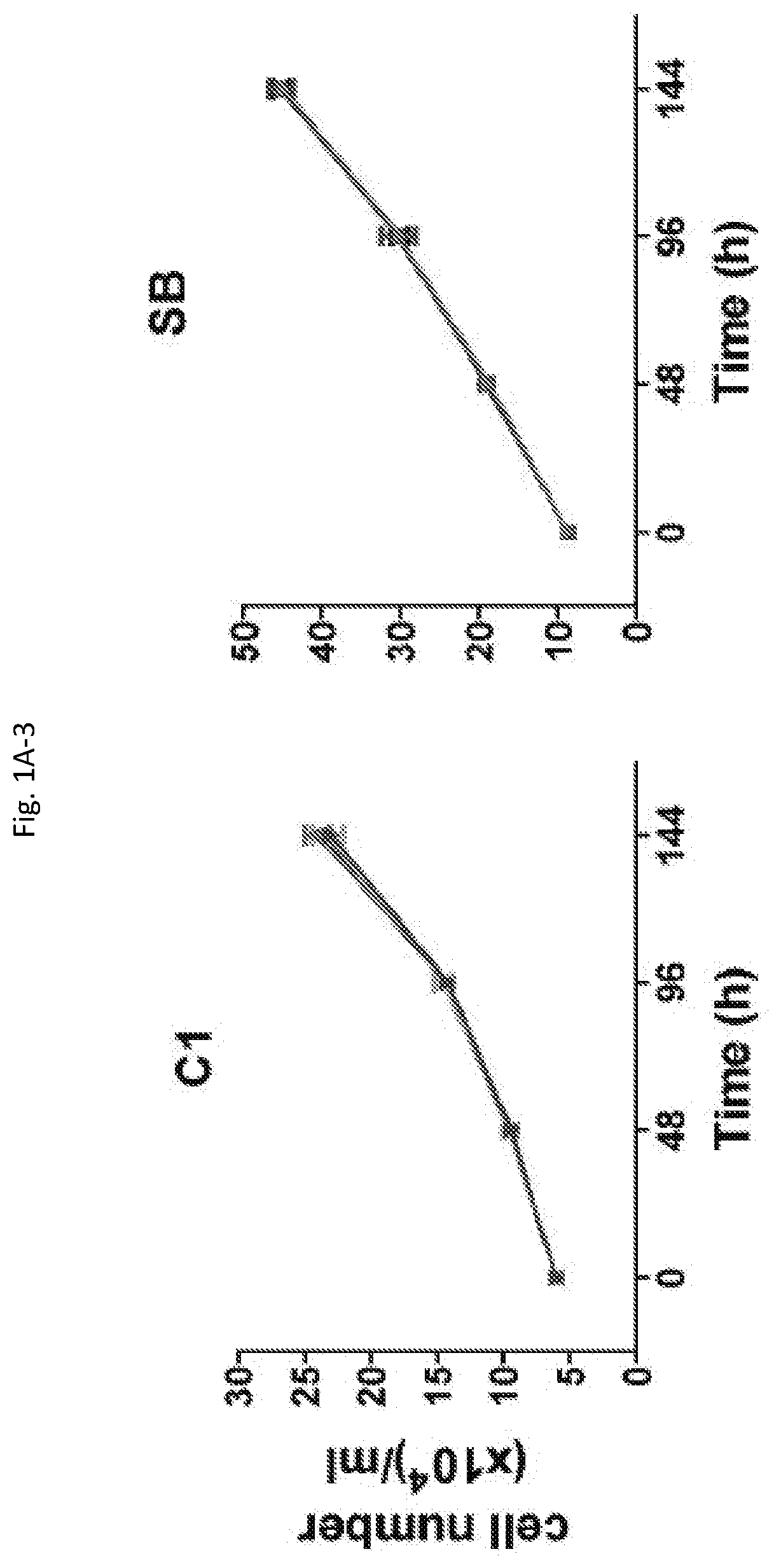Methods for treating, preventing and detecting the prognosis of colorectal cancer
- Summary
- Abstract
- Description
- Claims
- Application Information
AI Technical Summary
Benefits of technology
Problems solved by technology
Method used
Image
Examples
example 1
and Methods for Examples 2-7
[0221]Bacterial Strains and Cell Cultures.
[0222]E. coli DH5a was grown at 37° C. in LB broth in air. Wild-type Fn 12230 and its fadA-deletion mutant US1 were grown at 37° C. in Columbia broth supplemented with 5 μg / ml hemin, 1 μg / ml menadione under anaerobic condition (90% N2, 5% CO2, and 5% H2). To prepare CFSE-labeled Fn, the bacteria were grown to mid-log phase (A600=0.3) and washed twice with PBS followed by incubation in PBS containing 50 μM of 5-(and-6)-carboxyfluoroscein diacetate succinimidyl ester (CFSE; Invitrogen, Grand Island, N.Y.) at room temperature for 30 minutes with gentle agitation. The labeled bacteria were washed ten times with PBS and re-suspended in PBS. The labeled bacteria were plated on the Tryptic soy agar supplemented with 5 μg / ml hemin, 1 μg / ml menadione, and 5% defibrinated sheep blood to numerate the viable bacterial cells. Cell cultures AA / C1, AA / C1 / SB (aka SB), AA / C1 / SB / 10C (aka 10C), HCT116, DLD1, SW480, HT29, and MCF-7 w...
example 4
adherin, Annexin A1 and 13-Catenin Form a Complex in Cancerous Cells
[0260]FadA was previously shown to be bound to E-cadherin on CRC cells (Rubinstein et al. 2013). Therefore, the interactions between FadA, E-cadherin and Annexin A1 were examined Induction of Annexin A1 expression by FadA was mediated through E-cadherin (FIG. 3A), although Fn did not affect E-cadherin expression at the transcription level as determined by real-time qPCR (FIG. 3I). Analysis by confocal microscopy revealed that Fn and FadAc co-localized with E-cadherin and Annexin A1 in 10C and DLD1 cells on cell membrane as well as intracellular (FIGS. 3B and 3C). This is consistent with a previous report that binding by FadAc caused cadherins (vascular endothelial cadherin and E-cadherin) to internalize (Rubinstein et al. 2013). In FadAc-treated 10C cells, not only did Annexin A1 expression increase, so did co-localization of E-cadherin and Annexin A1, compared to mFadA- or BSA-treated cells (FIG. 3C). Western blot ...
example 5
Annexin A1 Co-Express in Colorectal Tumors in Mice and Humans
[0263]The correlation between FadA and Annexin A1 was examined in vivo by utilizing APCmin / + mice, which carry a mutation in one copy of the tumor suppressor gene APC and develop spontaneous tumors in the small intestine and colon. C57BL / 6 APCmin / + mice gavaged with wild-type Fn 12230 developed significantly more tumors in the colon than those treated with the fadA-deletion mutant US1, E. coli DH5α, or PBS (FIG. 4A), demonstrating a driver role of FadA in tumorigenesis. In all treatment groups, significantly higher levels of ANXA1 mRNA were detected in the tumors compared to the normal colonic tissues from the same mice, with the highest levels observed in those treated with wild-type Fn (FIG. 4B). A positive correlation between fadA and ANXA1 was detected in Fn-induced tumors, with a correlation coefficient of 0.43 (p=0.01; FIG. 4C). Among CRC patients, higher levels of fadA and ANXA1 were detected in the adenocarcinoma t...
PUM
| Property | Measurement | Unit |
|---|---|---|
| Pharmaceutically acceptable | aaaaa | aaaaa |
| Gene expression profile | aaaaa | aaaaa |
| Level | aaaaa | aaaaa |
Abstract
Description
Claims
Application Information
 Login to View More
Login to View More - R&D
- Intellectual Property
- Life Sciences
- Materials
- Tech Scout
- Unparalleled Data Quality
- Higher Quality Content
- 60% Fewer Hallucinations
Browse by: Latest US Patents, China's latest patents, Technical Efficacy Thesaurus, Application Domain, Technology Topic, Popular Technical Reports.
© 2025 PatSnap. All rights reserved.Legal|Privacy policy|Modern Slavery Act Transparency Statement|Sitemap|About US| Contact US: help@patsnap.com



